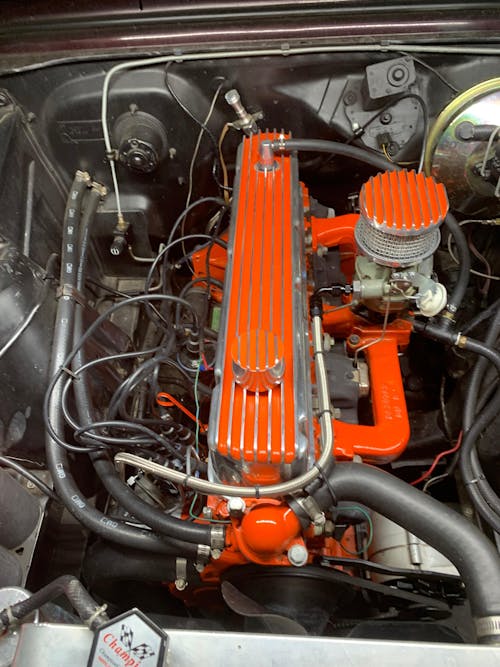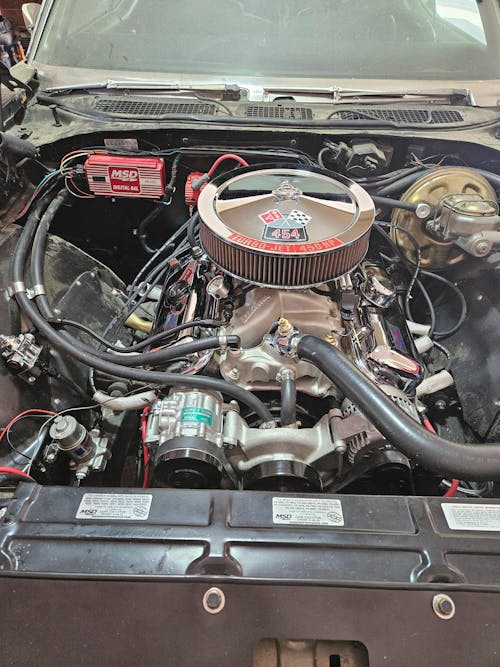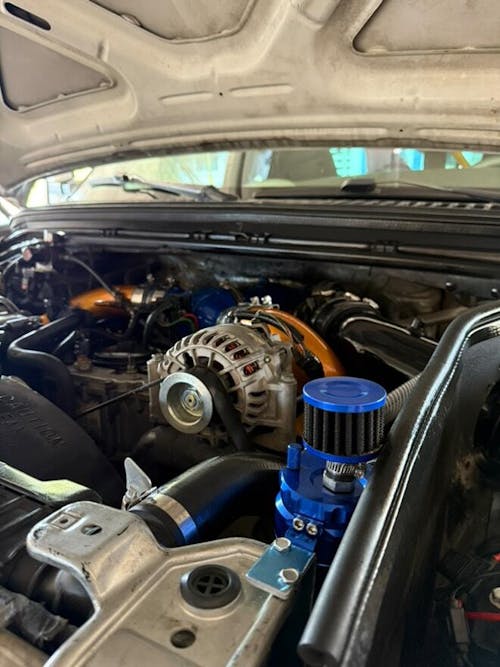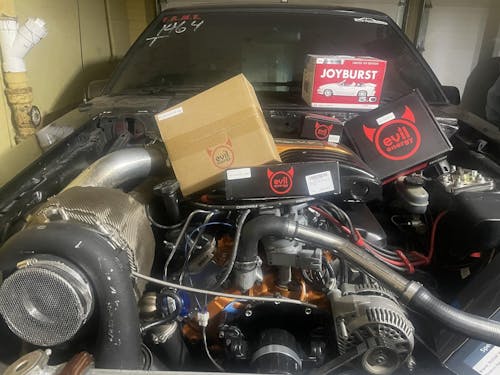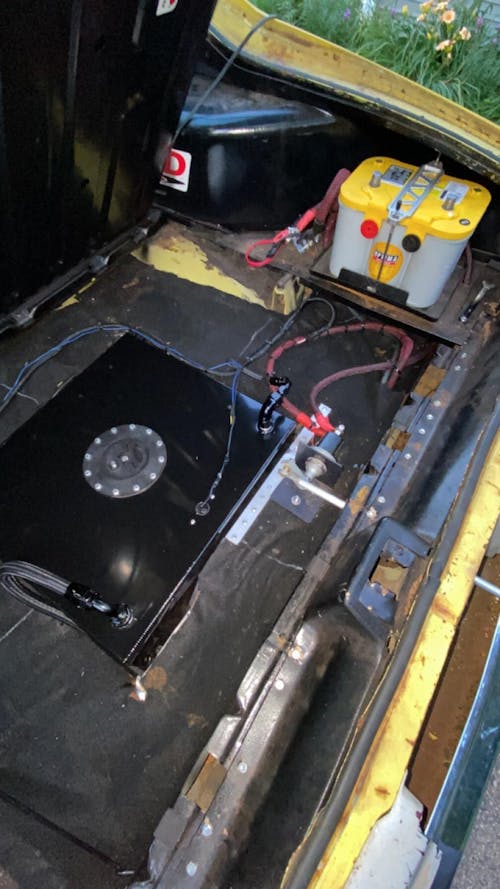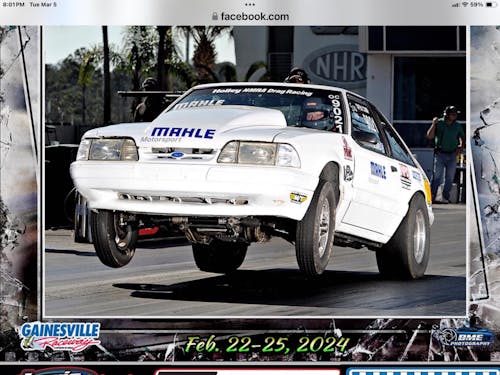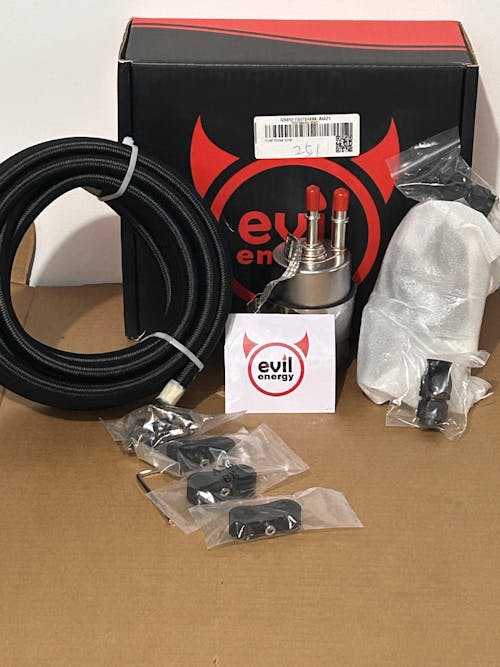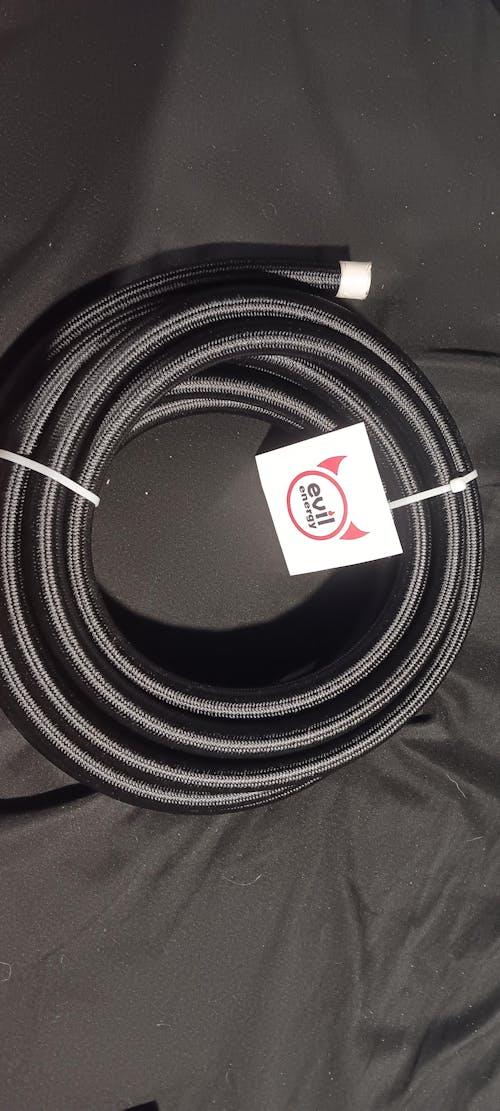How Much Is a Fuel Pump Replacement Cost and What’s the Best Fuel Pump for a Car?
When my car started sputtering and taking longer to start, I knew something was wrong. It turned out to be the fuel pump—and if you're reading this, you might be in the same boat. In this guide, I’ll walk you through what I learned about fuel pump replacement cost, how to spot the signs of a failing pump, and why I chose to upgrade with an EVIL ENERGY fuel pump.
What Is a Fuel Pump?
A fuel pump is an essential part of your car’s fuel system. Its main job is to pull fuel from the tank and push it toward the engine with the correct pressure. Whether you're driving a daily commuter or a high-performance build, the pump ensures your engine gets the right amount of fuel when it needs it.
Without a functioning fuel pump:
-
Your engine may crank but not start.
-
Acceleration will suffer.
-
You could end up stranded.
If you’re looking for performance and durability, EVIL ENERGY fuel pumps are built for reliable fuel delivery—whether you’re on the street or the track.

What Are the 3 Types of Fuel Pumps?
When I was looking into replacements, I discovered that not all fuel pumps are the same. Here are the three main types I came across:
-
Mechanical Fuel Pumps – These are typically found in older carbureted engines. They're mounted on the engine and operated by a lever that rides on a camshaft lobe. While reliable for low-pressure systems, they’re outdated for modern setups.
-
Electric In-Tank Fuel Pumps – This is the most common type found in today’s cars. It’s installed inside the fuel tank and pushes fuel to the engine with high pressure. While they work well, they’re harder to access and more costly to replace.
-
Electric Inline Fuel Pumps – These are mounted outside the tank, often along the frame rail or near the engine. They’re perfect for performance builds, LS swaps, or retrofits.
For those looking for a straightforward, high-performance solution, the EVIL ENERGY inline fuel pump is a top pick—easy to install, low-maintenance, and built to handle serious power.
Why the Fuel Pump Matters in Automotive Performance?
The fuel pump of a car is the lifeline between your fuel tank and engine. Without proper fuel delivery, the engine just won’t run right. I noticed hesitation when accelerating and a whining noise near the tank. Sound familiar?
What Does a Fuel Pump Do?
-
Keeps fuel flowing under the right pressure
-
Ensures consistent performance
-
Supports cold starts and throttle response
When I swapped in an EVIL ENERGY external inline fuel pump (300LPH), I noticed instant improvements: better throttle response, smoother idling, and cleaner pulls at higher RPMs.
And since I’m into light mods and long drives, upgrading the fuel system gave me peace of mind, even under heat, load, or a long uphill haul.

How Much Does a Fuel Pump Cost to Replace?
Here's what I found while researching:
-
Labor: $150–$350
-
OEM parts: $200–$600
-
Performance parts (like EVIL ENERGY): $80–$300
How I Saved Money
Instead of opting for a costly dealership replacement, many enthusiasts prefer a 12V universal fuel pump for its higher fuel pressure and convenient installation. These pumps typically include fittings, making them a practical choice for direct upgrades or custom setups.

For more comprehensive needs, the EFI Fuel System Kit offers an all-in-one solution—bundling the fuel pump, PTFE fuel lines, and AN fittings. This not only simplifies installation but also helps reduce overall cost and sourcing time.

For LS swaps or other custom fuel system builds, EVIL ENERGY’s fuel line kits stand out with their flexibility, clean layout, and ease of routing. They're designed with performance and DIY usability in mind, making them ideal for both street and track projects.
How to install the new fuel pump?
-
Choose a Mounting Location Mount the fuel pump close to the fuel tank, ideally below the fuel level, to ensure gravity-assisted fuel flow and prevent dry starts.
-
Install the Pre-Filter (100 Micron) Connect a fuel line from the fuel tank outlet to a 100-micron fuel filter to catch large debris before it reaches the pump.
-
Connect the Fuel Pump Route a line from the pre-filter to the inlet of the inline fuel pump, then connect another line from the pump outlet to the next component.
-
Install the Post-Filter (10 Micron) Place a 10-micron fuel filter after the pump to catch fine contaminants before the fuel reaches the engine or fuel pressure regulator.
-
Connect the Fuel Pressure Regulator Route the filtered fuel into the fuel pressure regulator, which controls pressure to the injectors. The regulator should also have a return line back to the tank.
-
Wire the Fuel Pump Connect the pump’s power lead to a relay triggered by the ignition switch, and include a fuse for protection. Ground the negative lead securely to the vehicle chassis.
-
Prime and Adjust the System With the wiring complete, turn the ignition key to the ON position (engine off) to prime the system. Adjust the regulator to match your engine’s required fuel pressure.
-
Check for Leaks and Secure Fittings Inspect all lines, clamps, and fittings to ensure there are no leaks and everything is securely mounted for safe and reliable operation.

What Are the Symptoms of a Bad Fuel Pump?
When my fuel pump started going out, the symptoms came on gradually—but they were all there. If you're noticing any of these signs, your fuel pump might be failing:
-
Long cranking before the engine starts
-
Engine sputtering—especially at highway speeds
-
Loss of power under acceleration or going uphill
-
Random stalling, even when the tank is full
-
Poor fuel economy or engine misfires
-
Whining noise coming from the fuel tank area
It’s easy to blame bad gas or old spark plugs for performance issues, but in many cases, the real problem is fuel delivery. Swapping in the EVIL ENERGY inline fuel pump often clears things up instantly, bringing back smooth starts, steady power, and peace of mind.
What Happens If You Ignore a Bad Fuel Pump?
I’ve been there—hoping the problem would go away, blaming bad gas or a cold start. But ignoring a failing fuel pump only made things worse. Here's what can happen if you keep driving without addressing it:
-
Sudden engine shutdown while driving, which can be dangerous
-
Reduced fuel pressure, leading to poor acceleration and hesitation
-
Hard starts or complete no-start conditions
-
Overworked fuel injectors, possibly leading to more costly repairs
-
Lean air-fuel mixture, which can damage your engine over time
Once the car fails to start completely, it becomes clear that reliability matters. Replacing the worn pump with the EVIL ENERGY 300LPH fuel pump has helped many drivers restore power and avoid future breakdowns.
How to Start a Car If the Fuel Pump Is Bad?
If your fuel pump has completely failed, starting your car might not be possible without replacing it. But if it’s intermittently working or just weak, here are a few emergency methods I’ve tried (and seen work) to get the engine running:
-
Key Cycling Trick: Turn the key to the “ON” position (not start) for 2-3 seconds, then back off. Repeat 3–5 times before trying to start the car. This helps build fuel pressure in weak systems.
-
Tap the Fuel Tank: If the pump motor is stuck, a firm tap to the bottom of the fuel tank (using a rubber mallet or your palm) can sometimes jolt it into action temporarily.
-
Use Starting Fluid (only in emergencies and with caution): Spray a small amount of starting fluid into the throttle body. This can help start the engine briefly, but it won’t keep running without fuel delivery.
-
Check Fuse and Relay: A blown fuse or faulty relay might mimic pump failure. Swap relays or test fuses as a quick check.
While these quick fixes might work once or twice, they’re not long-term solutions. That’s why many drivers choose the EVIL ENERGY inline electric fuel pump—and rarely look back after experiencing the difference.
Do Fuel Pumps Give Warnings Before Failing?
Yes, most failing fuel pumps show warning signs before they completely stop working. Looking back, my fuel pump didn't just die suddenly—it gave subtle clues along the way:
-
Longer cranking time when starting the engine
-
Noticeable drop in fuel efficiency
-
Loss of power when accelerating or going uphill
-
Occasional sputtering or jerking
-
Whining sound coming from the fuel tank
FAQs
Q1: What is the average fuel pump replacement cost? In a shop? $300–$700. DIY with an EVIL ENERGY kit? Under $200 in most cases.
Q2: How long does a fuel pump last? Most last over 100,000 miles. I replaced mine at 120K miles with an EVIL ENERGY inline pump.
Q3: Can a fuel pump fail without warning? Mine didn’t. It gave plenty—noise, weak acceleration, bad fuel economy.
Q4: What’s the best replacement for a fuel pump auto setup? I’d recommend the EVIL ENERGY 300LPH inline fuel pump. It’s universal and performs like a champ.
Q5: Do I need special tools to install an inline electric fuel pump? Nope. Just basic hand tools. The kits include most of what I needed.
Q6: Is the EVIL ENERGY fuel system compatible with ethanol or E85? Yes! That’s one reason I chose their kits. The PTFE fuel lines handle ethanol blends without breaking down.
Q7: Can I use EVIL ENERGY pumps for off-road or race builds? Absolutely. I’ve used their fuel cell kits in off-road and track setups—reliable flow and easy to plumb.
Q8: Can You Fix a Fuel Pump Without Replacing It?
If it’s just a clogged filter or wiring issue, maybe. I tried cleaning connections and checking relays. But if the pump motor is toast, like mine was, full replacement is the only real fix.
I picked up the 10-Gallon Fuel Cell Kit for my track car, and it’s been flawless. Pressure holds solid even when temps rise and revs climb.
Q9: Can You Drive With a Bad Fuel Pump?
I did—briefly—but it was stressful. The car would surge, stall, or lose power suddenly. Not worth the risk. I upgraded to the Fuel Injection Line Kit and haven’t looked back.
Plus, I felt better knowing I wasn’t slowly roasting my injectors or starving the engine under load.
Ready to Upgrade Your Fuel System?
If you're tired of dealing with hard starts, stalling, or unreliable power, don’t wait. I made the switch to EVIL ENERGY and couldn’t be happier.
My recommendations:
Upgrade your automotive fuel pump now and experience smoother starts, more consistent performance, and peace of mind—whether you're daily driving, racing, or just wrenching in your garage.
Explore More with EVIL ENERGY
Subscribe to Our Newsletter
Join the EVIL ENERGY community and stay informed:
- Dive into discussions about performance upgrades, tuning insights, and product knowledge
- Get early access to exclusive offers, limited-time promotions, and new product launches
Follow Us on Social Media
There's more to EVIL ENERGY than just the Carburetor. Step into a dynamic world of motorsports, builds, and behind-the-scenes action:
- Catch event highlights, real-world installs, and product releases
- Discover creative builds, community tips, and the culture that drives our passion
Follow EVIL ENERGY here
-
TikTok: @evil_energy_autoparts
-
YouTube: @ievilenergy
-
Instagram: @evil_energy_autoparts
-
Facebook: EvilEnergyRacing


![EVIL ENERGY 4/6/8/10AN PTFE Fuel Line Kit | E85 Nylon Braided Hose | 16/20FT Black Black with Comprehensive Fittings [20FT]](http://www.ievilenergy.com/cdn/shop/files/Test-2025-Evilenergy-125598065_165x.png?v=1742144807)
![ptfe hose fitting kit [16FT]](http://www.ievilenergy.com/cdn/shop/files/Test-2025-Evilenergy-125598171_165x.png?v=1742144807)
![CPE Fuel Line[25FT]](http://www.ievilenergy.com/cdn/shop/files/25FTCPE_FuelLine_165x.png?v=1735220649)
![CPE Fuel Line[20FT]](http://www.ievilenergy.com/cdn/shop/files/20FTCPE_FuelLine_165x.png?v=1735220649)


